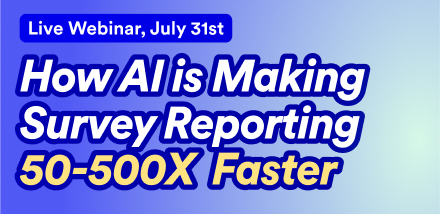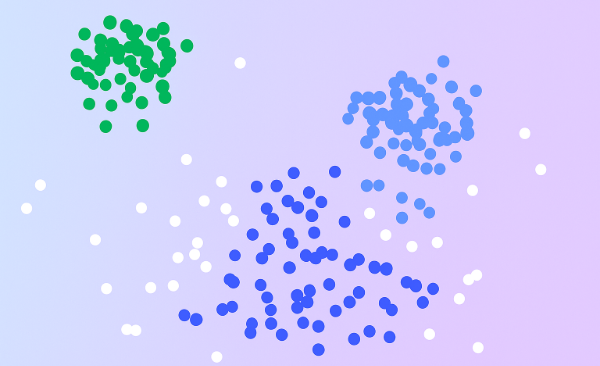Cluster analysis is the process of grouping similar objects into groups (clusters) using specific algorithms. The final product is a set of clusters where each cluster is distinct from the others, but the clusters' objects are more or less similar. It's how researchers segment consumers, identify behavioral patterns, and uncover hidden structures in complex datasets.
Traditionally, this has been done using statistical methods like K-means or hierarchical clustering. But with the rise of large language models (LLMs) like ChatGPT and Claude, a new approach has emerged: AI clustering.
These generative AI models are transforming how we identify patterns and similarities in unstructured text — helping researchers uncover insights that would be missed using traditional methods.
So if you're working with purely text-based data, AI clustering tools are the gold standard (read on for a demo). They outperform older clustering approaches that relied on statistical methods like K-means or hierarchical clustering, which were never really designed for language data in the first place.
That said, these models aren’t a silver bullet for everything. They struggle when fed mixed data types (e.g., text data combined with numeric), and they aren’t yet suited for every kind of analysis — particularly conjoint and MaxDiff. But when it comes to clustering text? AI wins.
What Is AI Clustering?
There are a few different interpretations of the term 'AI clustering '. In the context of market research, it refers to the use of AI to automatically group similar data points based on patterns. This is an unsupervised learning task, meaning the AI doesn’t need predefined categories; instead, it discovers the clusters organically.
In practice, AI clustering automatically classifies data into specific categories. And when it comes to text data, this is a quick and effective way to code verbatims from a survey, analyze customer feedback, product reviews, support tickets, or any other source of unstructured language data.
This makes AI clustering especially powerful for market researchers, CX analysts, and insight teams dealing with large volumes of qualitative data. It saves time, improves consistency, and often uncovers patterns that might be missed using traditional coding methods.
AI Clustering in Action: Categorizing Open-Ended Text
Let's use the example of open-ended survey responses. If you were to ask “what do you like about your phone company?”, you would end up with a long list of free-form text data — people talking about pricing, service, coverage, and so on.
That’s where AI clustering steps in — quickly grouping similar responses based on shared ideas, making hidden insights easy to spot.
This is where AI clustering shines. Although it is possible to manually create your themes/segments, it is AI clustering that allows you to find patterns in your data and sub-groups of customers that you would have otherwise missed.
In Displayr, AI-powered text categorization is prompt-based. This means you have the flexibility to customize your prompt for complete control. You can read Displayr's guide to custom prompting here.
- Load your data with the open-ended responses.
- Use the AI Text Categorization tool and provide a prompt like: “Please cluster the data into different groups. The data shows what people liked about their phone company.”
- Let the model decide the number of clusters, or guide it to a specific number.
- Classify each response, automatically assigning it to relevant segments.
- The AI recognizes overlapping ideas, generates coherent labels for each group, and classifies responses accordingly.
Dealing With Overlapping Clusters
When asking someone what they like about their phone company, you could expect to get an answer like this: “I like the price, the friendly staff, and the fast service.”
In the language of traditional cluster analysis, this would be referred to as overlapping clustering. Overlapping is inherent when it comes to text data.
There are dedicated overlapping clustering algorithms to address this issue. However, there is also a more straightforward way.
When working with text data in Displayr, you have the option to classify each response into only one theme, or multiple themes. By selecting multiple themes, you assign the responses to all relevant clusters, while preserving the richness of the data.
The Future of AI Clustering
We’re still in the early days of using generative AI in market research, but the results are already game-changing. For open-ended text responses, AI clustering is faster, richer, and more accurate than traditional coding or statistical clustering.
Even better, it doesn’t require a data science degree.
With tools like Displayr, anyone can apply advanced AI clustering to real-world research problems in just a few clicks — from text analysis to segmentation and beyond.
Ready to try it? Start your free trial of Displayr and see how AI clustering can transform your analysis.

